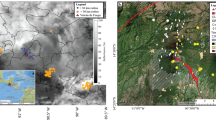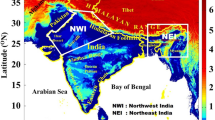Abstract
Thunderstorm thermodynamics, electrification processes in clouds and lightning are interrelated geophysical phenomena not yet well understood. Further research is also needed regarding the fundamental atmospheric electric processes controlling the interaction phenomenology of the thunderstorm clouds chemistry and electrodynamics and the clouds near and distant surrounding space such as the earth surface, the upper atmospheric layers, the ionosphere and the magnetosphere. Today we believe that some of these interaction processes my keep under cover the feed-back mechanisms which accelerate the growth of thunderstrom cells and it has become clear that lightning in all its figures is the central atmospheric electric event in the complexion of the above geophysical phenomena. It is hoped that deeper knowledge regarding the physical characteristics of the above mentioned processes may contribute to better prediction of the long-term effects of e.g. air pollution on the global Earth environment and it is also believed that this knowledge will increase our possibilities to find the means for a better control of the Earth environment. Analyzes of the appearance of lightning on a global scale, which are until now based only on night-time observations which are made from different orbiting satellites do, however, indicate the experimental ability to study the above coupling mechanisms using the lightning discharge as the basic diagnostic tool. Today a second generation of meteorological satellites is under consideration and the space administrations, ESA and NASA, are in progress to develop an advanced optical lightning flash detector to be included into the second generation meteosat instrumentation load.
Access this chapter
Tax calculation will be finalised at checkout
Purchases are for personal use only
Similar content being viewed by others
Author information
Authors and Affiliations
Editor information
Editors and Affiliations
Rights and permissions
Copyright information
© 1991 Springer-Verlag Tokyo
About this chapter
Cite this chapter
Scuka, V. (1991). The Ability of Using Lightning Flash Detector Data for Geophysical Research — A Study Initiated by the ESA Meteosat Program for the Second Generation Meteorological Satellites Instrumentation. In: Kikuchi, H. (eds) Environmental and Space Electromagnetics. Springer, Tokyo. https://doi.org/10.1007/978-4-431-68162-5_61
Download citation
DOI: https://doi.org/10.1007/978-4-431-68162-5_61
Publisher Name: Springer, Tokyo
Print ISBN: 978-4-431-68164-9
Online ISBN: 978-4-431-68162-5
eBook Packages: Springer Book Archive




